- Administrator
- Albums and Singles

artist: PAULINE OLIVEROS
title: Accordion & Voice
catalog #: IMPREC140
upc: 793447514024
release date: April 24, 2007
format: CD
Pauline Oliveros (b. 1930) is an accordionist and composer who currently resides in Kingston, New York. Her instrument is tuned in Just Intonation and she often includes it in her meditative improvisational music. Her music is not meditative in the sense that it is intended for listening to while meditating, rather each piece is a form of meditation, such as her aptly titled Sonic Meditations.
A central figure in post-war electronic art music, Oliveros is one of the original members of the San Francisco Tape Music Center (along with Morton Subotnick, Ramon Sender, Terry Riley, and Anthony Martin), which was the resource on the U.S. west coast for electronic music during the 1960s. The Center later moved to Mills College, where she was its first director, and is now called the Center for Contemporary Music. Oliveros often improvises with the Expanded Instrument System, an electronic signal processing system she designed, in her performances and recordings.
“Accordion and Voice was the first of my recordings as a soloist. I was living in an A-frame house in a meadow just below Mount Tremper at Zen Mountain Center. I had a wonderful view of the graceful saddle mountain top. When away on a performance trip I would imagine the mountain as I played Rattlesnake Mountain. I followed the feelings and sensations of my many experiences of the mountain - the changing colors of the season, the breezes and winds blowing through the grasses and trees.
Horse Sings From Cloud taught me to listen to the depth of a tone and to have patience. Rather than initiating musical impulses of motion, melody and harmony I wanted to hear the subtlety of a tone taking space and time to develop. The tones linger and resonate in the body, mind, instrument and performance space.
My thanks to Important Music for bringing these pieces to be heard again.” - Pauline Oliveros 2007
Read More
- Administrator
- Albums and Singles

artist: PAULINE OLIVEROS
title: The Wanderer
catalog #: IMPREC141
upc: 793447514143
release date: April 24, 2007
format: CD
The Wanderer is based on a single modal scale (B C# D D# E F# G#) and rhythmic modes based on a meter consisting of ¾ and 3/8. Part I, Song, is intended to explore the unique resonant qualities of accordion reeds through long sounds. Subtle variations come about from differences in tuning and air pressure. Part II, Dance, demonstrates the sharp accenting power of the accordion bellows in a mixture of cross rhythms characteristic of jigs, reels, batucadas, Bulgars, klezmer forms, Cajun dances, and music of other diverse cultures.
The Wanderer was composed in November, 1982 especially for the Springfield Accordion Orchestra, directed by Sam Falcetti. This recording documents The Wanderer's world premiere, as it was performed 27 January, 1983 at Marymount Manhattan Theatre. The orchestra consists of twenty accordions, two bass accordions, and five percussion, with Pauline Oliveros as soloist, Sam Falcetti conducting.
Horse Sings From Cloud, written in 1975, is one of Oliveros' best known works. Like most of her Sonic Meditations, it can be performed vocally and/or instrumentally, solo or in collaboration. A solo version of Horse Sings From Cloud has been recorded on Accordion & Voice. An early version of the score reads, “Sustain a tone or sound until any desire to change it disappears. When there is no longer any desire to change the tone or sound, then change it.”
This time, Horse Sings From Cloud is performed in ensemble. Joining Pauline Oliveros on bandoneion are Heloise Gold on Harmonium, Julia Haines on accordion, and Linda Montano on concertina. This quartet version incorporates the microtonal differences in tuning of the selected instruments, creating shimmering reed sounds somewhat similar to the shimmering of a Balinese gamelan.
Read More
- Administrator
- Albums and Singles
A new QRD (issue #32) is up. We have a lot going on this issue. As some of you may know, I was in a car crash a few months ago & I have been talking to a lot of people about it & so I have a ton of car crash stories from semi-famous folks like Alan Sparhawk, James Newman, Nathan Amundson, Will Dodson, & myself. Nathan Amundson contributes a few more times for a Rivulets interview & an appearance in I Heart FX & a piece he co-wrote with me on Gifts for Touring Musicians. We have two short stories from long time contributor Paticia Russo called Bound and Loose & See and Say. A nice little short short from Tara Vanflower called She Was a Doll. I guess the big surprise interview this issue is David Galas, who last appeared in QRD #1 as a member of Lycia. We have an interview with our buddy Jamie Barnes who will hopefully interview his dad for us in June. There is an interview with Max Soren of The Goslings. Finally finishing up we have two more installments of I Heart FX from Martin Newman (Plumerai) & Shane DeLeon Sauers (Rollerball). So a big issue. & hopefully there will be more soon. I'm shooting for another one in two months.
A new Lost Kisses (#4) is up. Or watch it on YouTube It's a comic/slow-cartoon about watching the news & finding out an ex-girlfriend is dead.
Read More
- Administrator
- Albums and Singles
THREE NEW RELEASES FROM COLD SPRING
Wholesale / Trades welcome. Please email
Read More
- Administrator
- Albums and Singles
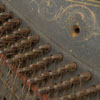 If Toronto's Do Make Say Think haven't changed much in the decade or so they've been on the scene, it's because they haven't needed to. Their mastery of their basic aesthetic elements—from their natural, textured guitar sound, to their melancholy passages, huge crescendos, album-long symmetry and even their earthy packaging—works so well that they need little evolution. It's as if they found the perfect moment and haven't left it in ten years.
If Toronto's Do Make Say Think haven't changed much in the decade or so they've been on the scene, it's because they haven't needed to. Their mastery of their basic aesthetic elements—from their natural, textured guitar sound, to their melancholy passages, huge crescendos, album-long symmetry and even their earthy packaging—works so well that they need little evolution. It's as if they found the perfect moment and haven't left it in ten years.
Constellation
It's because this blueprint is so well-developed that additions are easily absorbed and sometimes barely noticed. On You, You A History in Rust, this previously-instrumental band introduces vocals ("A With Living"), although they are given no preferential treatment. The vocals appear, make their statement and recede before a long trickle of instrumentation twice as long as the vocal segment. It's as if to say "a voice box, a singing saw, a violin…it doesn't matter what it is as long as it can express longing."
Similarly, "The Universe!" has the instruments fused, chugging along like a proper indie pop song (uncharacteristic for them) before disintegrating into a mass of noodling noise (much more characteristic). It in turn gives way to the gentle acoustic "A Tender History in Rust." It makes sense. These sounds could only have existed side-by-side. Everything they do makes sense.
The obvious criticism of DMST is to say "if I have one record, why would I need another?" Well, because the law of diminishing returns doesn't apply to them. They have stretched out this sound without losing impact. And when you find something beautiful, don't you want more of it?
samples:
Read More
- Administrator
- Albums and Singles
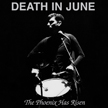 This collects rehearsal tapes and live performances from DIJ's early days, but is unfortunately more of an interesting historical curiosity rather than a compelling listen for anyone but the most die hard fans.
This collects rehearsal tapes and live performances from DIJ's early days, but is unfortunately more of an interesting historical curiosity rather than a compelling listen for anyone but the most die hard fans.
NER US
For me, the "demos and live tracks" compilation is difficult to deal with. They're usually interesting when relegated to bonus tracks on a remastered release or good box set fodder, but standing on their own they usually don’t succeed. A personal benchmark is Wire's Behind The Curtain. That single disc collection of demos and rarities showed the band during a transitional period, and those demos were often significantly different than the album versions. The Phoenix Has Risen, unfortunately, doesn’t achieve this lofty goal. The tracks are from The Guilty Have No Pride (i.e., the Laibach/Joy Division death rock days) era with Patrick Leagas and Tony Wakeford still as part of the group. The rehearsal tapes from 1981 demonstrate little different than rough takes of songs Death in June fans are all familiar with. With the exception of "We Drive East" (which has a different vocal style and is longer) and "Knives" (a.k.a. "Till the Living Flesh is Burned," which also features different vocals and lyrics), the songs are practically identical to the final released versions, just low quality mixes with indecipherable vocals.
The other half of the disc is a live show from 1983, which also covers much of the same ground as the rehearsals, and is no better than bootleg quality. Being a live performance, it is a bit more engaging, but once again, nothing any casual listener would be too enamored with.
The most interesting bits on here are unfortunately the shortest. The "Untitled" track from the rehearsal half of the album actually has Tony Wakeford getting downright FUNKY on a bassline for a bit under a minute, and the protracted introduction to the live performance, in which the lo fidelity setting of the recording gives the track a more militaristic industrial edge then could be expected.
One has to feel that Tesco/NER is starting to scrape the bottom of the barrel with these Death in June releases, and I suppose it was inevitable. The luxurious reissues they have issued over the past few years have been excellent, and it would seem that they are simply out of material. I just hope this does not set a precedent for future releases.
samples:
Read More
- Administrator
- Albums and Singles
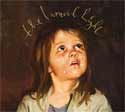 Current 93 hit the hight point of their career with the album at the center of this trilogy: 1996's All the Pretty Little Horses was and is the most perfectly rendered artistic statement that David Tibet and company have created. This will sound like blasphemy to the legions who jumped aboard the apocalyptic folk train with last year's Black Ships Ate the Sky, but trust me: I know what I'm talking about. This album is much, much better than Black Ships, and I unreservedly consider it to be one of the finest albums ever recorded.
Current 93 hit the hight point of their career with the album at the center of this trilogy: 1996's All the Pretty Little Horses was and is the most perfectly rendered artistic statement that David Tibet and company have created. This will sound like blasphemy to the legions who jumped aboard the apocalyptic folk train with last year's Black Ships Ate the Sky, but trust me: I know what I'm talking about. This album is much, much better than Black Ships, and I unreservedly consider it to be one of the finest albums ever recorded.
In 1992, Thunder Perfect Mind exploded everything for which Current 93 had been known. Up to this point, Tibet and company had always been reliable purveyors of grim, post-industrial soundscapes: noisy loops punctuated by sinister nursery rhymes, possessed chanting and the occasional, quasi-satirical dip into traditional English folk. However, TPM was an inestimably huge advance for Current 93, a stunning concept album that finally gelled in its sincere and heartfelt recreation of British psych-folk, with lyrics that were fully invested with Tibet's now familiar blend of cryptic poetry, existential musing and teleological obsession. The bar was set very high indeed, but remarkably, 1994's Of Ruine or Some Blazing Starre upped the ante once more, a gorgeous song suite that married Michael Cashmore's brilliant and minimal arrangements with Steven Stapleton's hallucinatory audio wizardry, with a set of texts that were the equal or better of TPM's finest moments.
David Tibet was creating his own world, with a sound to call his very own, laboring away in relative obscurity, but slowly building a loyal fanbase that would hang on his every word. This fanaticism would pay off with Current 93's next release, an album so well conceived and executed that it can take its place among the masterpieces which clearly inspired it: The Incredible String Band's The Hangman's Lovely Daughter, Comus' First Utterance and Shirley Collins' The Power of the True Love Knot. In 1996, Current 93 released the conceptual trilogy The Inmost Light, consisting of two EPs bookending the centerpiece album All The Pretty Little Horses, each part released separately over a span of months. This new triple-disc foldout digipack reissue on Durtro Jnana unites all three parts of the trilogy, giving them the remaster treatment (which, incidentally, is virtually undetectable), and including a full lyric booklet and gently modified artwork. If you've already got all three CDs in their original World Serpent incarnations, there is not much to recommend this set, other than the opportunity to experience anew the many treasures of a timelessly great album.
Where the Long Shadows Fall, though it is haunting and affecting, is in many ways the weak link of the trilogy. Upon repeated listenings, the loop which form the backdrop of the piece—Alessandro "The Last Castrato" Moreschi's fragile falsetto voice singing "Domine"—threatens to become a bit aggravating. Tibet repeats the EP's title with an elegiac sincerity, with occasional, jarring intrusions of droning sinfonie and sampled children's choirs, as well as haunting bits of wobbly old records of parlor music. This sidelong piece sets the scene, introducing the predominant themes of dream, death, childhood nostalgia and spiritual yearning which will find full expression on Horses. I got the chills as the piece faded out and realized that I could just barely make out the voice of John Balance intoning the improvised phrase: "Why can't we all just walk away?"
Forming a perfect continuity, Horses opens as Shadows ended: the droning of the sinfonie, the tinkling of delicate bells, the just-out-of-reach loop of Moreschi, and Balance's sad mantra, this time very audible. This segues directly into one of the most lovely and bone-chilling moments in the Current 93 oevre, Tibet's whispery vocal take on the titular Appalachain lullaby, transforming it from an innocent bit of childhood whimsy into an eerie meditation on the tragic disparity between our dreams and our reality. The next three songs contain the indispensable creative stamp of Michael Cashmore, who uses the figerpicking method he perfected on Starre to sublime effect, creating gorgeous melodies for Tibet's possessed vocals to wrap around. One of the things that undoubtedly stands out about this album, more than a decade later, is the amazing and inventive production: each plucked string vibrating perfectly, Tibet's voice bouncing between the stereo channels, forming a strange call-and-response with himself to haunting effect. For all of its eclecticism, Black Ships did not sound nearly as rich and evocative as this record. Far be it from me to speculate, but I can't help but feel that the superiority of Current 93's 1990s work is indicative of a certain manic-ness on Tibet's part, a darkly glittering intensity geared towards the perfection of his own self-expression that has faded over time, as success and relative comfort and stability have increased.
Whatever the case, it is hard to deny the power of this album, especially a track like "The Bloodbells Chime," a tribute to cat artist Louis Wain, containing a fragile, off-kilter piano melody joined by Cashmore's resonant acoustic guitar, climaxing in a moment that can only be described as utterly disarming. If you've heard the album before, you'll know what I'm talking about: "Thereohthere/The Inmost Light/The Happy Children rise from all their pools/Eyes still sealed/With mud and night/It's their Inmost Night." It is here that I begin to notice Stapleton's hand in the album's sound, as sample upon sample is layered and mutated to devastatingly psychedelic effect: children laughing, children crying, lysergically mutated vocal snippets creating a bubbling undercurrent of dread that will reach its apotheosis on the eight-minute "The Frolic," as a bloodcurdling sample comes swimming out of the murk with the staccato, accusatory scream of "Dead!" Tibet seems particularly fixated on the idea that his enlightenment, his desire to cleanse himself, to unmake his past and be born again, may have come too late, and that eternal salvation is forever out of his grasp. Thus, the return to images of childhood, to the signifiers of an innocence irrevocably lost, to vivid dreams and simple piety now sedimented by unhappy years of spiritual malaise.
The darkambient centerpiece of the album "Twilight Twilight Nihil Nihil" is a perfect stopgap before the next epic vocal track, "The Inmost Light Itself," containing one of Tibet's most dreadfully pessimistic lyrics: "Our hands tumble towards the skies/To block visions of The Inmost Light/And if I pointless arch/And spit whitenothings at the sky/Oh Bigboys - check it out: too fucking late." This against a lovely Cashmore arrangement of strummed guitar and Joolie Wood's clarinet, which constantly threaten to be drowned out by a frightening sample that sounds at first like children playing—with all of the characteristic yelling, laughing and chattering—but begins to seem as if it might be the sound of children in the midst of some terrifying holocaust, screaming and writhing in pain. It comes as a relief to hear Nick Cave's soulful, deep-voiced rendition of "All the Pretty Little Horses," followed by the album's coda: Cave reading Blaise Pascal's uncompromisingly dark and apocalyptic Pensees over a ghostly sampled choir.
With such a perfectly lovely and dread-filled conclusion, it is almost unfortunate to have to follow it with the concluding part of the trilogy, The Stars Are Marching Sadly Home. Although it is one of Current 93's most complex and fascinating works, indispensible for its inclusion of Shirley Collins, it ends up seeming like the superfluous gilding of the lilly when heard directly after Horses. Taken on its own terms, however, and as a conceptual third part of the trilogy, Stars is a terrific sidelong track. The creaking of a great wooden ship (a Black Ship?) sets the stage for Tibet's final prayer, an ominous sea shanty followed by a deliberately paced text so apocalyptic it achieves a Book of Revelations-style grandeur: "These days shall not come again/The stars are marching sadly home/The seahorse rears to oblivion." Tibet's words are artifically time-stretched, smeared, blurred, cracked and mutated, spinning out over a warbling sample of a vintage 78 so disintegrated and distorted that it seems positively alien. Andria Degens of Pantaleimon reads the final part of Tibet's text as the track becomes noisier and more discombobulated, climaxing with a squall of white noise and Shirley Collins' singularly melodic and matronly a cappella rendition of "All the Pretty Little Horses," by far the most emotionally penetrating take on the song across the trilogy.
Here it is, back in print. One of the best albums produced by one of the most fertile and creative minds of underground music. An album that, though it is so intense and emotionally draining, I never get tired of listening to. Right around this same time, the other two World Serpent-distributed projects most frequently mentioned alongside Current 93—Coil and Nurse With Wound—were also producing some of their most masterful and magickally-charged albums. Perhaps it was something in the water.
samples:
Read More
- Administrator
- Albums and Singles
 The second album from the duo of Thomas Strønen and Ståle Storløkken sees them continue the good work they started on their debut album. This cheery album is one of the better things that either of them have been involved in, a collection of music far from the chaos of Supersilent and yet more active and organic than most Norwegian electronic music.
The second album from the duo of Thomas Strønen and Ståle Storløkken sees them continue the good work they started on their debut album. This cheery album is one of the better things that either of them have been involved in, a collection of music far from the chaos of Supersilent and yet more active and organic than most Norwegian electronic music.
Rune Grammofon
While I enjoyed Strønen's recent solo outing, I found it too skeletal at times and the presence of Supersilent’s Storløkken on Hornswoggle adds the much needed flesh to the bare bones. Humcrush are fairly lighthearted in comparison to most of the Rune Grammofon artists (this is not a slur on those artists!), barring a couple of exceptions the pieces on Hornswoggle are fun, both artists sounding like they are having a great time making this music. The title track in particular is buoyant and exciting, the precise and powerful percussion floating in a sea of warm electronics.
The more serious parts of the album are filled with Strønen's signature percussion style. "Anamorphic Images" is centered on his jerky and resonant percussion while Storløkken steps back and only adds small details to the piece. The sparseness of this piece allows the unusual sounds of Strønen's beats to become more defined but without sounding solitary and lost like they sometimes do when he is performing on his own. However, the album sometimes feels a little too formulaic with Strønen only repeating rhythms and Storløkken playing around them. Luckily towards the end of the album they break up their playing, challenging themselves to approach the music in different ways. For example, "Knucker" is a fantastic play off between the pair with Strønen playing some very nice jazz fills and Storløkken getting hyperactive on his keyboards. The following track, "Roo," is in complete contrast to the rest of the album with the drumming taking the backseat and the electronics leading the piece.
As a duo they both compliment and bring out more from each other. I am surprised the album is so enjoyable because Supersilent are a group that I find difficult to listen to; I was expecting Storløkken's presence to be a problem for me. Thankfully this is not the case, Hornswoggle is extremely satisfying to listen to. The duo has done a superb job that is better than the work of theirs that I have encountered outside of Humcrush.
samples:
Read More
- Administrator
- Albums and Singles
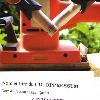 Quellet’s approach to musique concrete and sound manipulation pays careful homage to the likes of Pierre Schaeffer and Luc Ferrari but Quellet's own mark remains distinct. His work has its own voice despite the weight of history that he is composing against. It is nice to hear a fresh take on what has become a stodgy and uninspired field of music; he clearly has a lot of talent and a good ear for sound.
Quellet’s approach to musique concrete and sound manipulation pays careful homage to the likes of Pierre Schaeffer and Luc Ferrari but Quellet's own mark remains distinct. His work has its own voice despite the weight of history that he is composing against. It is nice to hear a fresh take on what has become a stodgy and uninspired field of music; he clearly has a lot of talent and a good ear for sound.
Sub Rosa
Quellet assembles his music from processed loops made by hitting all and everything around him, from a selection of drums to storage tanks and various household items. Most of the time he pumps up the levels on his loops to saturate the recordings, causing the beats to bleed into each other unrecognisably, only the rhythm being preserved. The resulting sounds are somewhat hackneyed; anyone who has ever listened to an oversaturated bootleg recording of any loud concert will be familiar with the sound of saturation. However, Quellet's arrangements easily overcome the staleness of the sounds. He repeats the rhythms with little to no variation within each piece; they become captivating by sheer act of determination on his part. On "Pour percussions et saturation, bruits de gorge," he records abstract vocalisations from his throat and overlays them on the grinding percussion track. The end result being an ominous and atmospheric piece that sounds like so much more than overdriven percussion and a voice.
Considering the abrasive nature of many of the sounds utilised by Quellet, Oppressum is remarkably listenable. There is a dark humour to his work, the repeating farmyard animal sounds on "Pour percussions, jouets sonores" sound both ridiculous and disturbing when the low, menacing throb in the background is factored in. As the piece progresses, Quellet's processing adds a vicious edge to the electronic farmyard toys, ending up as an apocalyptic version of Orwell's Animal Farm. The queasy laughter on "Pour voix et rire, percussions, orgue" also generates a feeling of absurd danger. At first it seems silly but the barrage of laughing takes on a hideous and manic tone as the piece goes on. This piece and the one involving the animal sounds above both highlight Quellet's skill at taking seemingly innocuous sounds and turning them on their head, which for me is one of the basic tenets of musique concrete.
Quellet demonstrates on Oppressum just how much can be done with a few microphones and some inspiration. The range of sounds from a few household items, voice and a church organ is boggling. All the more impressive is the deft way in which Quellet assembles these sounds into pieces of music. Considering this is the start of his recording career, it will be interesting to see what future releases will contain as his skills become more refined. Even if he never releases another sound, Oppressum is still a powerful and evocative release worthy of any of the greats of musique concrête.
samples:
- Pour percussions, jouets sonores
- Pour voix et rire, percussions, orgue
- Pour percussions, ponceuse, frappes sur clavier de téléphone
Read More
- Administrator
- Albums and Singles
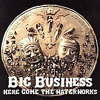 Wary of the dubious hype emanating from The Wire and other pretentious, quasi-academic outlets, I've pretty much steered clear of any "heavy" album one might learn of from such sources. Yet, something about the bass/drum duo known as Big Business drew me to seek out their latest album, and having done so I'm not the least bit disappointed.
Wary of the dubious hype emanating from The Wire and other pretentious, quasi-academic outlets, I've pretty much steered clear of any "heavy" album one might learn of from such sources. Yet, something about the bass/drum duo known as Big Business drew me to seek out their latest album, and having done so I'm not the least bit disappointed.
Although I'm fully aware of just how in vogue it is to be a scruffy, dateless fan of metal-referencing shoegaze acts these days, I've always curbed my own potential enthusiasm by actually listening to these artists' tunes and feeling bored or otherwise let down. If there's one genre save for noise that could do without any more artistic self-indulgence, it's metal. In a recent interview with the Melvins, I read of their inclusion of the Big Business duo of Jared Warren and Coady Willis with interest. I haven't been a Melvins fan of late, though I still dig their Atlantic releases from that period long before Mike Patton began rubber-stamping anything King Buzzo tossed in his direction. Still, that they'd recorded an entire album, last year's A Senile Animal, with two simultaneously performing drummers seemed novel to me, though I'm positive it's been done before. Still, rather than seek out that recording, I opted to pick up the new Big Business album instead.
While not exactly formulaic, Here Come The Waterworks constantly balances the accessible and the foreign. Complex drum rolls and brutal riffing open "Just As the Day Was Dawning" and kick off this impressive set of heavy hitters. Its chorus soars with an arena rock quality, all the while dazzling with adroit experimentation. Channeling Judas Priest and Motorhead, "Hands Up" jolts with anthemic ferocity, each kick drum exploding like illegal fireworks. What typically kills even the most musically thrilling metal acts is an indistinct, forgettable vocalist. Thankfully, Warren's voice stands out, unquestionably superior to today's screamo dandies and black metal goofballs. His style, clearly informed by both '80s wailers and '90s screamers, recalls Jaz Coleman with slightly less bile. Warren's lyrics are surprisingly thoughtful, as on the incredible "Shields," where he morbidly rants simultaneously on the inevitability and unpredictability of death.
The final tracks, "I'll Give You Something To Cry About" and "Another Beautiful Day In The Pacific Northwest," are each twice as long as any of the preceding killers. The latter of these veers into the perilous sludgy waters of stoner metal, though after so many sensational head bangers, it works remarkably well as an album closer. Anyone who has ever loved metal at any point in his or her life will find Here Come The Waterworks an absolute pleasure, guilty or otherwise.
samples:
Read More
- Administrator
- Albums and Singles
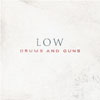 While Low are still known best for their basic three instrument arrangements, they have continuously been pushing their studio recordings to places beyond the signature sound and fan expectation. With Drums and Guns, they may have gone a bit too far. As much as I love Low and consider them one of the best rock music songwriting entities ever, no matter how much I listen to this album, I can't connect with it as a whole as much as I want to.
While Low are still known best for their basic three instrument arrangements, they have continuously been pushing their studio recordings to places beyond the signature sound and fan expectation. With Drums and Guns, they may have gone a bit too far. As much as I love Low and consider them one of the best rock music songwriting entities ever, no matter how much I listen to this album, I can't connect with it as a whole as much as I want to.
Hard core fans will recognize this sound: it's the sound of their B-side alternate takes. Going back through their catalog and listening to songs like the version of "Be There" from the "Over the Ocean" single, "I Remember" found on the B-side of "Immune," or "Shots and Ladders" from the "Canada" single, Low are known to have their more standard basic guitar strumming rock version and the more daring alternate take. On Drums and Guns, there is next to zero standard guitar chord strumming anywhere; the sound of Alan's guitar, when present, consists more of single-note playing and droning sustains while the rest of the instrumentation is dominated by sequencers, live percussion and drum machines, and samples. It's a move which eerily parallels Radiohead's Kid A, which means I'm sure it will gain them a ton of respect but it also has the potential to alienate a number of fans.
A number of the songs should be familiar to many, as they have been performed live for a few years and, in the case of "Murderer," have had recordings surface even before 2005's The Great Destroyer. Songs that were some of my favorite "new" live songs like "Dragonfly" and "Murderer" have become some of my fave songs on record. Although the music might make them sound distant: more robotic and less human, the lyrics still have the power to make clean cuts into the soul. The album is easily Low's most gruesome, as the title even suggests (throughout history soldiers and fighters march with drums and guns, after all) opening with the song "Pretty People" and its belting cry about how all the soldiers, little babies, poets, liars, and pretty people are "all going to die," picking up a couple songs later with "Breaker" as Alan sings how the "blood spills and spills" and "my hand just kills and kills." "Sandinista" is another example, sounding like a battle march with the multi-layered drumming and the lyrics to match "deep through the clouds, hear them marching up slowly fresh with the blood of your father so holy."
I can't help but think that some of the songs are fluff, however. "Your Poison" has potential with its opening vocal harmonies but at under 90 seconds it doesn't have the chance to develop. "Belarus" sounds pretty with its tinkling synthetic rhythms and Alan/Mimi harmony but it's relatively forgettable and while "Hatchet" may have a suggestive title, it's about burying "the hatchet like the Beatles and the Stones." It's a song I never was terribly fond of live and it's certainly not one of the best ones here.
"Murderer," while quite different from the original version on the Vinyl Films 10" single, still remains fairly powerful, but with a song that challenges god's evil and the cruelty of our own humanity, it's hard to be less than intense. I still think the earlier version was less alienating but with Low I'm sure there's a conscious reason behind this alienating sound on Drums and Guns. "Violent Past" closes the album with a typical rock progression, executed, however, through sampled organs and other weirdness, and while the lyrics continue with the fight theme of the rest of the album. Here we're finally given an attempt at an explanation, "maybe it's your violent past / maybe it's the violent path," Low's own interpretation of the old nature versus nurture argument but it's a compromise between the two. The message I'm getting from the album by this end is that underneath all the conflict, compromises are possible, I don't disagree with them but I'm simply not as captivated as I want to be.
samples:
Read More


